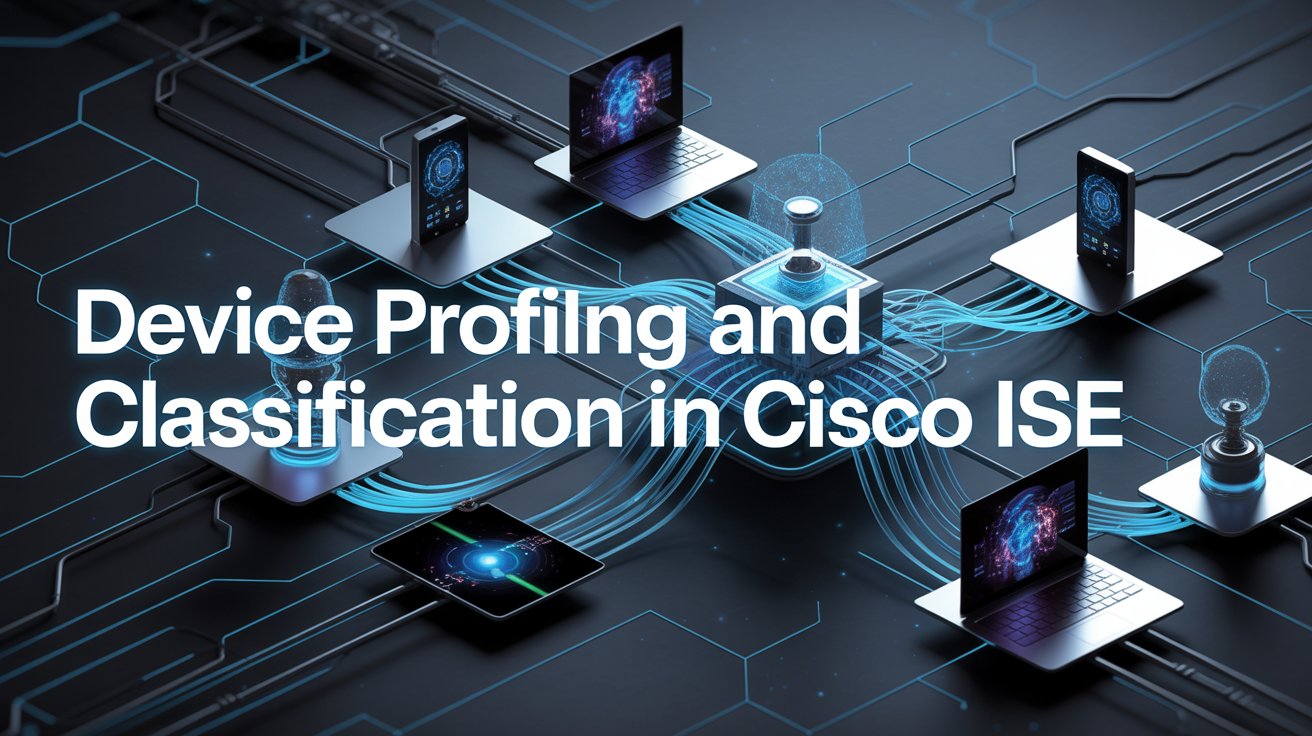Learn how Cisco ISE automates device profiling and classification to enhance visibility, enforce network access control, and strengthen Zero Trust security.
Device Profiling and Classification in Cisco ISE play a pivotal role in securing modern enterprise networks. As organizations embrace mobility, IoT, and cloud-driven environments, the number and diversity of connected devices have surged dramatically. From laptops and smartphones to printers, sensors, and guest devices, maintaining visibility and control has become increasingly complex.
Manual tracking and configuration are no longer practical in this dynamic ecosystem. Instead, automation, intelligence, and context-based security policies are essential to maintain compliance and safeguard sensitive assets. For IT professionals and administrators who want to pursue Cisco ISE Training, understanding how Cisco ISE automates device profiling and classification is crucial for implementing a secure and scalable network access strategy.
Understanding Device Profiling in Cisco ISE
Device profiling in Cisco ISE refers to the process of collecting and analyzing endpoint attributes to determine the device’s identity and purpose. The system automatically builds a context profile using attributes from multiple sources, such as DHCP packets, RADIUS authentication data, HTTP headers, SNMP traps, and NetFlow statistics.
Unlike traditional manual classification methods, Cisco ISE uses profiling probes and policy rules to dynamically recognize devices as soon as they attempt to connect. These devices are then placed into appropriate groups or assigned access permissions based on preconfigured authorization policies.
The Importance of Device Classification
Device classification provides the foundation for enforcing network access control (NAC) in Cisco ISE. By recognizing a device’s identity, administrators can ensure it receives only the permissions appropriate for its function and trust level. For example:
- A corporate laptop may receive full access to internal resources.
- An IoT camera might be restricted to a segregated VLAN.
- A guest smartphone could be limited to internet access only.
Without classification, every device would appear the same to the network, leading to significant security risks. Classification also allows Cisco ISE to maintain contextual visibility — knowing who and what is connected at any given moment.
How Device Profiling Works in Cisco ISE
Cisco ISE uses multiple profiling probes that collect and correlate data points from different layers of the network. The system evaluates the attributes of an endpoint and compares them to known profiles stored in its internal database.
Here’s an overview of the main profiling mechanisms and how they work:
| Profiling Method | Source Data | Purpose | Example Scenario |
| DHCP Profiling | DHCP packets, options, vendor class ID | Identifies OS or device type based on DHCP requests | Detecting printers, IP phones, or thin clients |
| RADIUS Profiling | Authentication attributes | Gathers endpoint data during 802.1X or MAB authentication | Classifying devices during access request |
| SNMP Query | Network device interfaces | Maps endpoints to switch ports and collects MAC info | Identifying endpoints connected to switches |
| HTTP Profiling | HTTP headers and user-agent strings | Determines browser, OS, or device type | Recognizing mobile or desktop devices |
| NetFlow Profiling | Traffic patterns | Detects device behavior based on communication flow | Profiling IoT devices based on network activity |
| NMAP Scan | Active port scanning | Detects OS, services, and open ports | Confirming device roles for unknown endpoints |
Each probe contributes additional evidence to help Cisco ISE identify the endpoint. When sufficient evidence is collected, ISE matches it to an existing profiling policy, classifies the device, and applies a corresponding authorization rule.
Profiling Policies and the Endpoint Database
Cisco ISE comes with hundreds of built-in profiling policies that help classify common device types, including Cisco IP phones, Apple iPads, Windows laptops, Android devices, and IoT sensors. These profiles are continuously updated through Cisco’s cloud-based Feed Service, ensuring new device types are automatically recognized.
When an endpoint is profiled, Cisco ISE adds it to the Endpoint Identity Group in its internal database. This entry contains vital attributes such as MAC address, IP, hostname, profile name, authentication status, and posture compliance results.
Administrators can:
- Manually edit endpoint attributes.
- Assign devices to specific identity groups.
- Configure static profiles for devices that do not dynamically change.
This centralized visibility ensures IT teams always know what is connected, where it is connected, and how it behaves.
Dynamic Policy Enforcement
Once a device is profiled, Cisco ISE dynamically applies authorization policies based on the classification result. These policies can define network access levels, VLAN assignments, downloadable ACLs, and security group tags (SGTs).
For example:
- Corporate Devices → Full access to internal networks.
- IoT Devices → Segmented into isolated VLANs.
- Guest Devices → Redirected to the guest portal.
This policy-based automation ensures consistent access control across wired, wireless, and VPN environments — a key enabler of Zero Trust Network Access (ZTNA).
Integration with Other Cisco Platforms
Device profiling in Cisco ISE becomes even more powerful when integrated with other Cisco solutions.
- Cisco DNA Center: Automates endpoint onboarding and network segmentation.
- Cisco Firepower & SecureX: Shares contextual data for adaptive security enforcement.
- pxGrid Integration: Enables bidirectional data exchange with SIEM and EDR tools for better threat detection.
- Cisco Catalyst Switches & Wireless Controllers: Provide network context and telemetry data for accurate profiling.
Such integrations extend visibility beyond access points, allowing Cisco ISE to deliver a comprehensive, adaptive security framework.
Challenges in Device Profiling
Despite its sophistication, profiling can face challenges such as:
- Encrypted traffic: Limits visibility into data attributes.
- Rapid IoT proliferation: Constant influx of new device types.
- Incomplete attribute data: Due to network misconfigurations.
To mitigate these challenges, administrators should regularly update profiling feeds, enable multiple probes, and maintain accurate DHCP and SNMP configurations across network devices.
Best Practices for Accurate Device Profiling
- Enable multiple probes — The more data collected, the higher the profiling accuracy.
- Keep the profiling feed updated — Regular updates ensure recognition of new device types.
- Leverage pxGrid integration — Share endpoint context with other platforms for unified visibility.
- Segment IoT and BYOD devices — Isolate them from core enterprise resources.
- Monitor and audit endpoint behavior — Identify anomalies or unauthorized device connections.
Implementing these practices ensures a secure, automated, and context-aware access control environment.
Conclusion
Device Profiling and Classification in Cisco ISE serve as the foundation for modern network access control and Zero Trust security. By continuously identifying, categorizing, and controlling endpoints, Cisco ISE provides unmatched visibility and policy automation across hybrid enterprise networks.
For professionals seeking to master these features and gain hands-on expertise in secure access management, enrolling in a Cisco ISE Course is the ideal next step toward achieving advanced network security proficiency.

















